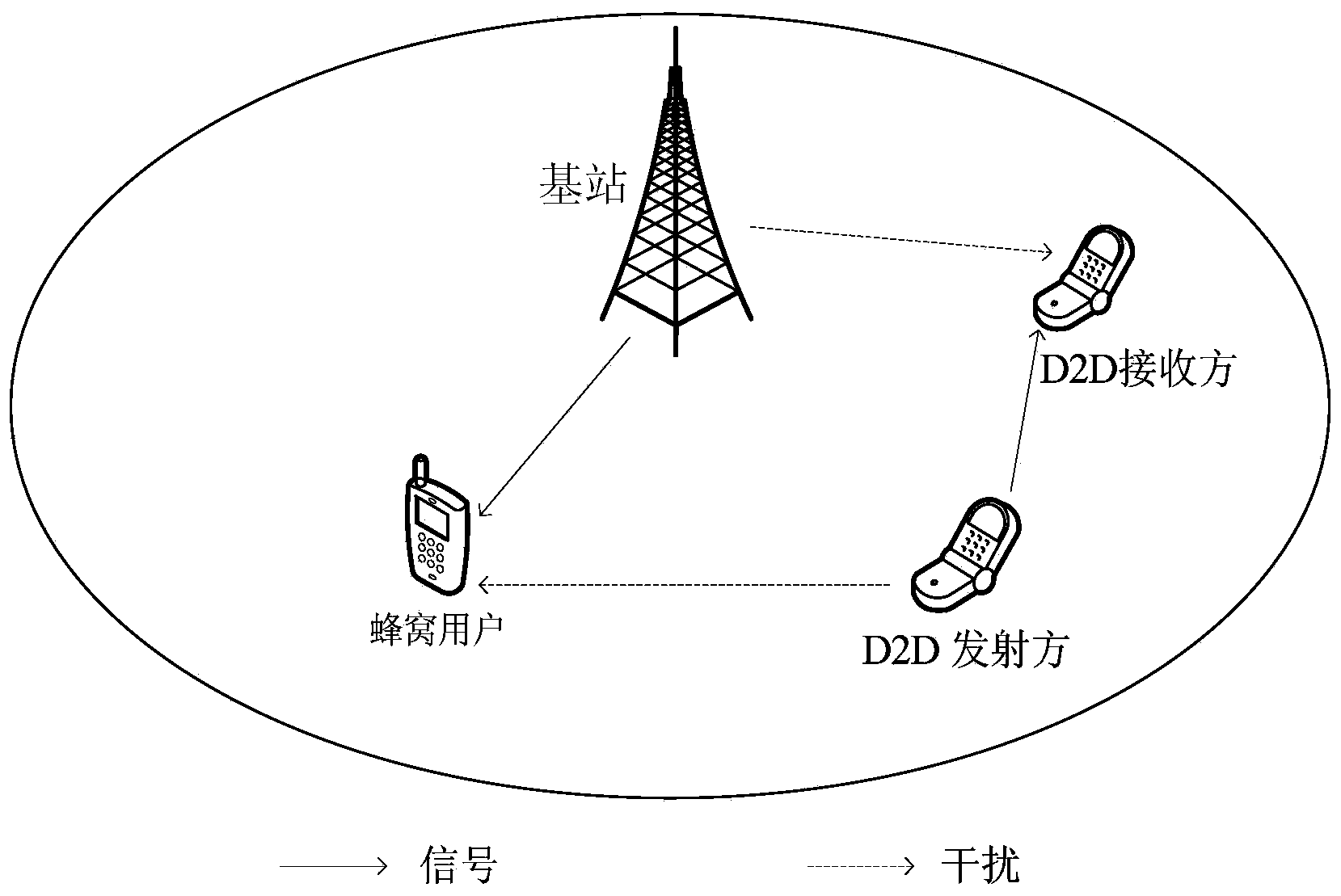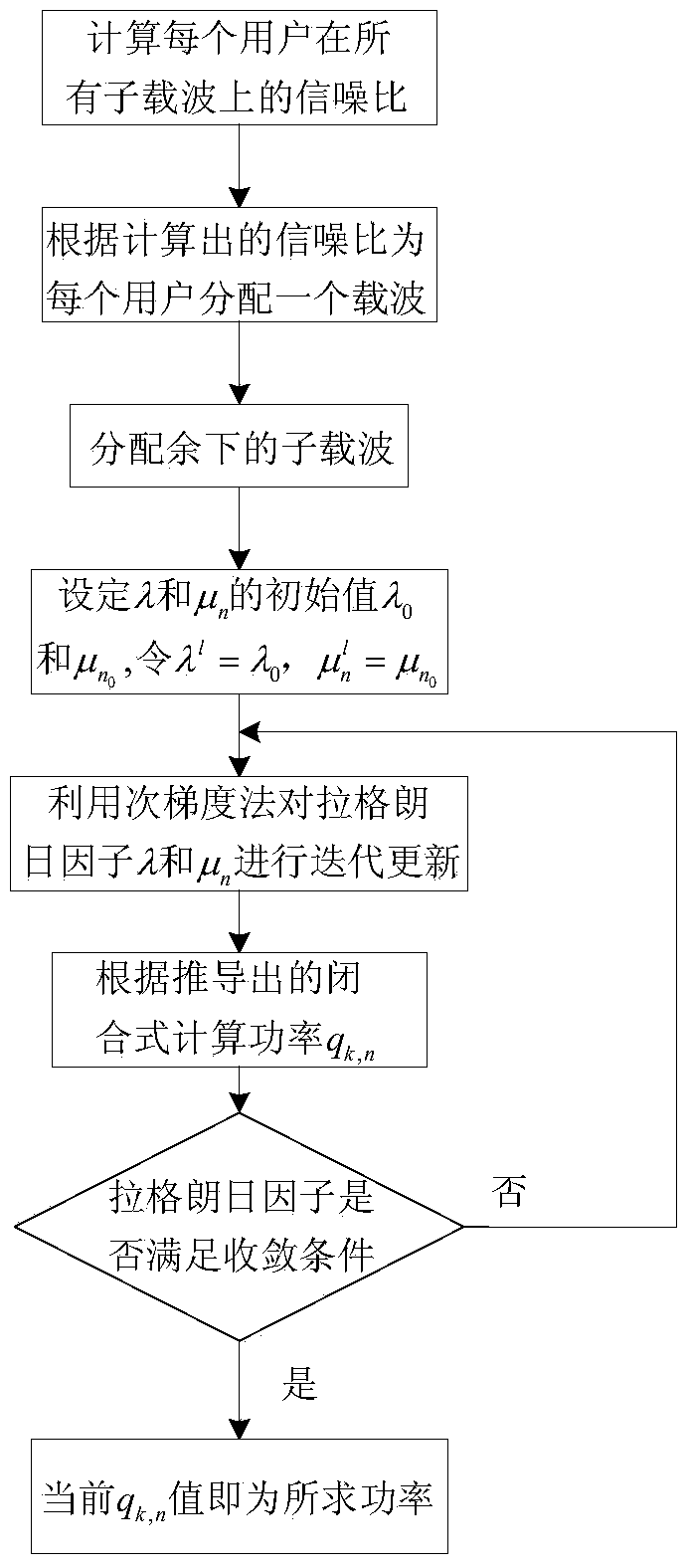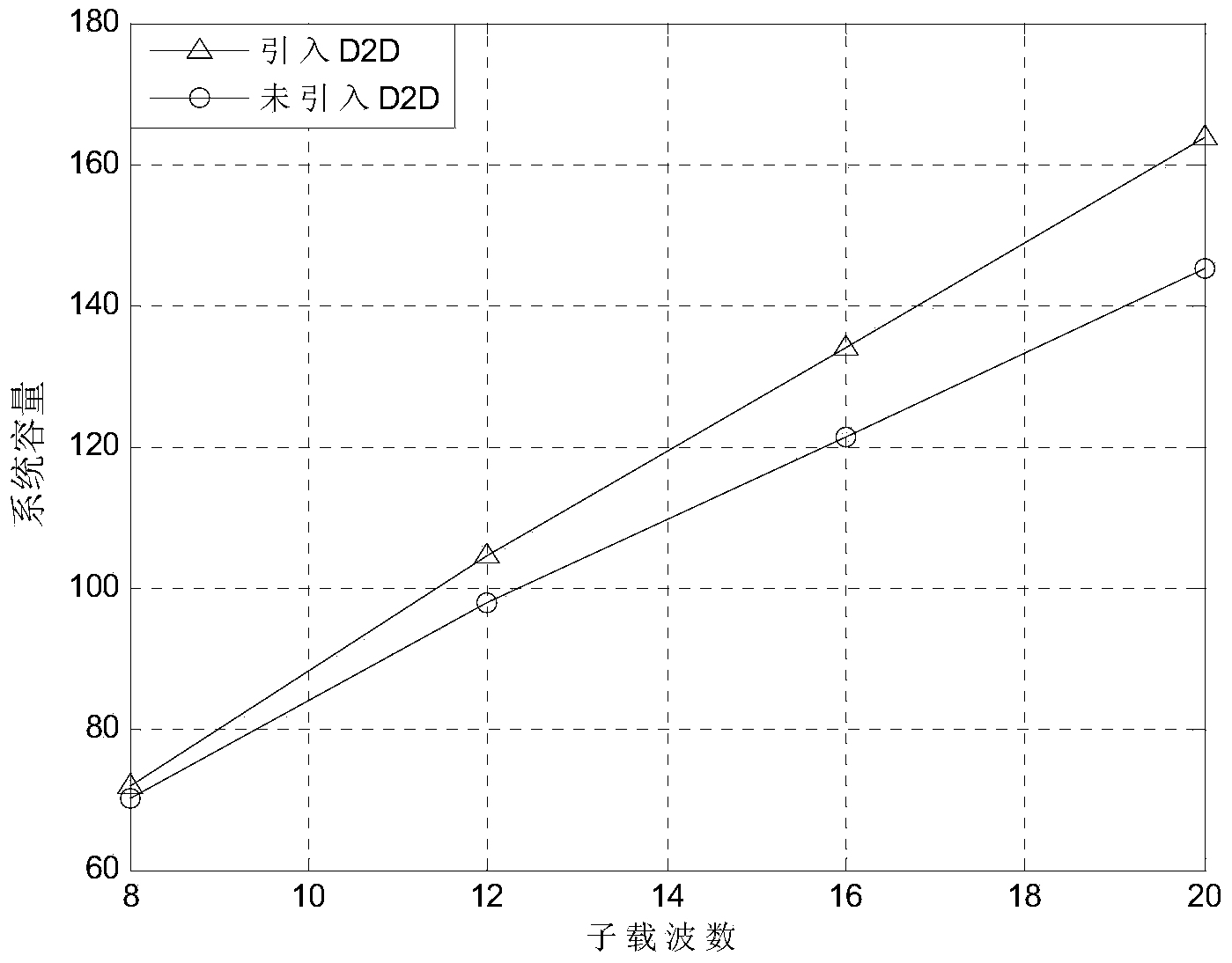D2D user resource distribution method based on multicarrier communication
A multi-carrier communication and user resource technology, which is applied in the field of D2D user resource allocation based on multi-carrier communication, can solve problems such as the lack of research on multi-carrier communication, and achieve the effect of improving utilization
- Summary
- Abstract
- Description
- Claims
- Application Information
AI Technical Summary
Problems solved by technology
Method used
Image
Examples
Embodiment Construction
[0030] The basic idea of the present invention is to allocate resources for multi-carrier communication to D2D users. First, subcarriers are allocated to users. Users make full use of the number of carriers provided by the system, and weigh the signal-to-noise ratio between D2D users and cellular users, and suppress the two kinds of users to the greatest extent. Interference between D2D users, each D2D user is allocated multiple carriers for communication. After all the carriers are allocated, the goal is to maximize the D2D user capacity, and the minimum signal-to-noise ratio requirement of the cellular user and the upper limit of the D2D user transmit power are constrained Conditionally establish the optimization function, introduce Lagrangian multipliers and use the subgradient method to update, when all Lagrange multipliers meet the convergence conditions, the power allocated on each carrier is obtained.
[0031] attached figure 1 It is a schematic diagram of the interfe...
PUM
 Login to View More
Login to View More Abstract
Description
Claims
Application Information
 Login to View More
Login to View More - Generate Ideas
- Intellectual Property
- Life Sciences
- Materials
- Tech Scout
- Unparalleled Data Quality
- Higher Quality Content
- 60% Fewer Hallucinations
Browse by: Latest US Patents, China's latest patents, Technical Efficacy Thesaurus, Application Domain, Technology Topic, Popular Technical Reports.
© 2025 PatSnap. All rights reserved.Legal|Privacy policy|Modern Slavery Act Transparency Statement|Sitemap|About US| Contact US: help@patsnap.com



